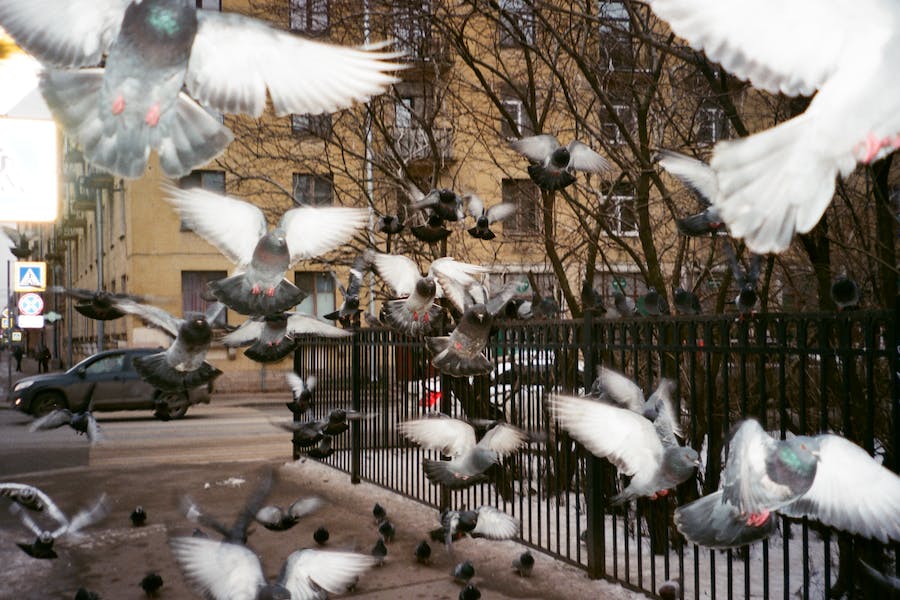Birds, with their whimsical flights and melodic songs, are often a delightful presence. However, for car owners, these feathered friends can become a source of frustration when they leave unwanted gifts on their vehicles. Bird droppings on cars are unsightly and can cause lasting damage to the paintwork. This article explores practical and humane solutions to this pesky problem. From understanding why birds are drawn to cars to employing various deterrent techniques and cleaning methods, we provide comprehensive strategies to help you keep your car poop-free while maintaining a harmonious relationship with our avian neighbors.
How To Stop Birds From Pooping On My Car?
To effectively stop birds from pooping on your car, a multi-faceted approach is often necessary. Here are some detailed strategies:
Strategic Parking: First and foremost, where you park can make a significant difference. Avoid parking under trees, which are favorite perching spots for birds. Instead, opt for covered parking spaces like garages or carports whenever possible. This shields your car not only from birds but also from elements like sun and rain.
Use of Protective Covers: If covered parking isn’t an option, consider using a car cover. These covers protect your car from bird droppings, dust, and other environmental factors. They come in various sizes and materials, so you can choose one that best fits your car and local climate.
Visual and Auditory Deterrents: Birds often avoid areas that seem dangerous to them. Visual deterrents like reflective tapes, decals, or even fake predators like plastic owls can create an unwelcoming environment for them. Similarly, auditory deterrents such as ultrasonic bird repellers or wind chimes can be effective. These devices create sounds that are unpleasant to birds but usually not detectable or disturbing to humans.
Physical Barriers: Installing bird spikes or netting around your parking space, especially on nearby trees or ledges where birds might perch, can prevent them from settling near your car. These barriers are designed to be uncomfortable for birds to land on, thus deterring them from staying near your vehicle.
Regular Cleaning and Maintenance: Keeping your car clean can reduce the likelihood of birds targeting it. Regular washing and waxing create a smooth surface that is less appealing for birds. In bird droppings, immediate cleaning is crucial to prevent paint damage. A soft cloth and a gentle cleaning solution can effectively remove droppings without harming your car’s paint.
Understanding Why Birds Target Cars
Understanding why birds target cars involves considering several factors that inadvertently make vehicles attractive to our feathered friends:
- Reflection and Shiny Surfaces: Birds are often attracted to reflective surfaces. The shiny exterior of a car, especially when it’s clean and polished, can catch a bird’s eye. They may see their reflection as another bird, leading to them either interacting with or attacking the perceived intruder.
- Heat and Warmth: Cars, especially those parked in sunny areas, can retain much heat. For many birds, this warmth is inviting, particularly in cooler weather. They may perch on or near cars to enjoy this warmth.
- Height Advantage: Birds naturally seek high vantage points for safety and to scout for food. Significantly taller vehicles like SUVs can provide an elevated perch for birds to observe their surroundings.
- Color and Design: Some birds are attracted to specific colors or designs. Brightly colored or uniquely designed cars might attract more bird attention than subdued vehicles.
- Food Residues: Birds have a keen sense of smell and might be attracted to cars with traces of food on or around them, such as crumbs or spills. This is more common in urban or suburban areas where people often eat in or around their cars.
- Habitual Behavior: Sometimes, birds target cars simply because they’ve learned to do so over time. If a bird finds a car to be a safe and comfortable spot, it may return repeatedly, and this behavior could even be taught to their offspring.
How To Prevent Birds From Pooping On My Car?
Preventing birds from pooping on your car involves a mix of proactive strategies and deterrent techniques. Here are some effective methods:
Choose Parking Spots Wisely:
Avoid parking under trees, near bird feeders, or in areas where birds are commonly seen roosting or feeding. Instead, park in open, uncovered areas where birds are less likely to congregate. Covered parking, like garages or carports, protects your car from birds.
Use Car Covers:
A car cover can be an excellent investment if you need access to covered parking. It protects your car not only from bird droppings but also from other elements like sun and rain. Ensure the cover is easy to put on and remove, making it a convenient daily-use item.
Employ Visual Deterrents:
Birds tend to avoid areas they perceive as dangerous. Installing reflective tapes, bird-repelling stickers, or even hanging CDs can create light reflections that discourage birds from approaching. Additionally, placing a fake predator, like an owl or hawk statue, near your parking space can be effective.
Install Auditory Deterrents:
Devices that emit ultrasonic sounds, invisible to humans but annoying to birds, can be effective. You can also use wind chimes or other noise-making devices, though these might be less desirable in residential areas due to potential noise issues for neighbors.
Physical Barriers:
Setting up bird spikes around your parking area, especially on nearby trees or ledges, can prevent birds from perching close to your car. However, ensure that these are installed humanely and safely.
Regular Cleaning and Maintenance:
A clean, well-maintained car is less attractive to birds. Regular washing and waxing can help, as birds are less likely to land on slick, smooth surfaces. Immediate cleaning of bird droppings is also crucial, as it prevents paint damage and reduces the likelihood of the area becoming a preferred spot for birds.
Alter the Environment:
Modifying the landscape around your parking area can help. Avoid planting trees or shrubs that attract birds near where you park. Additionally, ensure that trash bins are closed and no food sources are readily available.
Community Solutions:
Sometimes, the issue is larger than just your car. Working with your community or local authorities to manage large bird populations in public parking areas can be a more effective long-term solution.
Conclusion
While it can be challenging to completely prevent birds from targeting your car, employing a combination of strategic parking choices, deterrent techniques, and regular maintenance can significantly reduce the frequency of these incidents. Understanding the reasons behind birds’ attraction to cars and adapting your approach accordingly is critical. From using car covers and visual or auditory deterrents to altering your parking environment, each method contributes to creating a less inviting space for birds. It’s essential to remember that these measures should be humane, respecting wildlife while protecting your vehicle. Patience and persistence are crucial, as it often takes time for birds to alter their behavior. Ultimately, a proactive and multifaceted approach will help keep your car clean and free from bird droppings, allowing you to enjoy a pristine, well-maintained vehicle.










Leave a Reply